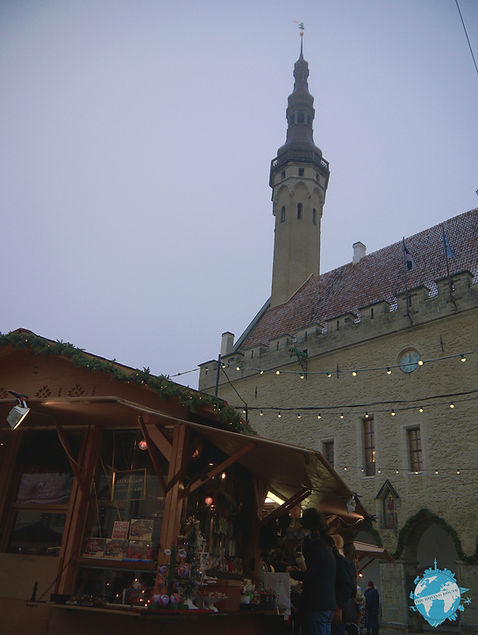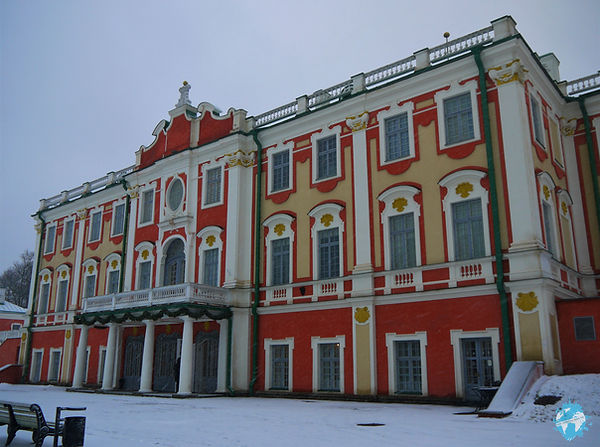
TALLINN
The smallest of the three Baltic capitals, Tallinn can sometimes be left in the dust. It was never the centre of an influential empire, nor an Art Nouveau hot spot, however, it is the only capital directly on the Baltic Sea allowing it to become a trading powerhouse. There are so many things to do in the city from the largest town hall in northern Europe to a palace turned art gallery, its a must city to visit!
What to do
Toompea
Tallinn has two distinct sections of the old city- there is the lower city with the market square and Fat Margarette, and Toompea, the city on the hill and the former home to the Tallinn Castle. Today, Toompea is home to a number of government buildings including foreign embassies, historic churches, part of the city wall, and fantastic viewpoints over the city. To reach the top of the hill there are a few paths from the lower city or a couple of major roads that will lead you past Alexander Nevsky Cathedral. As Tallinn's largest Russian Orthodox church, it's no surprise that the interior is ornately designed with the extensive use of gold in many of the paintings. While navigating the twisting streets of the hilltop isn't always easy, you should try to find the few points that offer stunning views over the city. Make sure you check it out at night as well as the majority of the main buildings in Tallinn's lower city are lit up offering unique photos. Depending on your path up to the hilltop, you may pass through one of the city gates. While the wall is quite fascinating, it's hard to overlook the series of faceless brass monks that mark your entrance. If you do find them walk to the edge of the path and look down to find a nod to Tallinn's former Danish history with the massive painted flag.

Tallinn Town Hall
Tallinn doesn’t have the same name recognition as surrounding cities like Helsinki, Stockholm, St Petersburg or even Minsk. That’s why it may come as a surprise to check out the city hall. This massive building took over 100 years to compete opening over 600 years ago in 1404. As the city was located at a crossroads between Europe and Russia, an extensive network of trade routes ran into the city leading to ever-increasing profits. This came to its height in the 15th century, shortly after the town hall was completed. With increasing profits, the town hall was renovated and updated at least 5 distinct times leading to the unique design you see today. As such, sections of the exterior walls actually hide original walls behind them making them extremely thick and even slightly curved. Over the years, decorative pieces have been added to the building including numerous gargoyles, statues, and famous Old Thomas. If you look closely, you will notice a young boy standing at the top of the town hall. His name is Thomas and

in the 1500s, during a crossbow competition, he was the only person to successfully hit the target. Though he was too young to win the prize, he earned eternal glory by being made a city guard and having a statue of him placed at the top of the city hall. The original 1530s statue can be found in a museum in the basement of the town hall.
Kadriorg Art Museum, Kadriorg Park and Kumu
(esti Kunstimuseum)
On the outer edge of Tallinn lies Kadriorg Park, home to 2 art galleries, a palace, and the current home of the Estonian President. The park and palace were originally designed and built by Tsar Peter the Great for his wife Catherine in the early 18th century. The palace is now home to the Kadriorg Art Gallery which displays the Estonian Art Gallery's collection of Dutch, German, and Italian paintings as well as many of the original murals and moldings from its days as a royal residence. Just up the road is the office of the Estonian President. What we found most fascinating with the building is the lack of guards surrounding what could be seen as one of the most important buildings in Estonia. There are no gates, no fences, and only 2 ceremonial guards. Interesting fact, though the 3 Baltic countries only gained independence from the Soviets 30 years ago, each one has voted in a female head of state including the current Independent Estonian president. Facing the office sits KUMU the colloquial name for Kunstimuseum or "Art Museum" in English. The gallery is home to the main exhibits of the Estonian Art Gallery as well as a number of temporary exhibits. Finished less than 15 years ago, the museum is one of the largest art galleries in northern Europe and slowly increasing its world importance.

Balti Jaama Turg
Balti Jaama Turg is one of the most unique markets in northern Europe. The multi-story open-concept warehouse houses dozens of restaurant stalls, a farmers market of sorts, a massive meat and cheese section, a full grocery store and what can only be described as an upscale flea market. This is all in addition to countless stalls that can be found at the entrances to the building. The name Balti Jaama Turg is best translated to "Baltic Station" as it is located next to the main train/tram station in town.
Covid Conscious Activities
With Covid-19 being such a huge factor in daily life, it is important to take steps towards a safer holiday like trying to limit your daily contact with others. Keep up to date with the latest local advisories and information.
The three Baltic capitals are some of the best cities to explore while being conscious of Covid-19. Tallinn is just a web of beautiful alleys, cobblestone streets, and viewpoints that you can't help but love being outside. Toompea is the old castle which now houses much of parliament and several foreign embassies. A few minutes from Central town is Kdiorg Art Museum, with its palatial art galleries and massive parks. Make sure to say hi to the president when you visit! Each of these are great activities to do once tourism starts to open back up post-Covid-19. Try taking a self-guided walking tour or audio tour to learn more about the city while staying socially distant from others
Where to Stay
It's tough to find somewhere in Tallinn that would not be nice to stay. As a general statement, much of the city is safe and well-kept meaning that if there is a hotel located there, you won't have issues with feeling unsafe. There are quite a few hotels inside the Old Town which is, of course, ideal but don’t be afraid to spread your wings and stay somewhere in the new areas. We stayed about a 15-minute walk away from the market square and even in the January cold, we didn’t feel it was necessary to take a taxi or a tram. There are many Airbnbs available as well but we found there to be a lack of grocery stores near the centre. You can always shop at the Balta Jaama Turg Market if you are close by!
How to get there and around
Tallinn is one of the most interesting cities because public transportation is free for all locals. In a bid to become mayor, a former politician made it his campaign to open the extensive tram and bus system to the locals of Tallinn which, somewhat surprisingly, he actually followed through with. While it costs the city a small fortune, no one will remove the law as it will almost guarantee them to lose the next election. Interestingly, the city has not tried to recoup this expense by overcharging tourists as a tram costs a reasonable 1 Euro when using a QR code or 2 Euros if bought directly from the bus driver.
If you are rather able-bodied, there shouldn’t really need to use any public transit as the city can be easily navigated by foot. The biggest struggle is the fact that the city was built in two stages on the edge of a cliff. There is a portion of the old city that sits on top of the cliff leading to a climb up a few hundred steps. That being said, the path takes you past some cute shops, eclectic bars and through a major gate of the old city walls.
As Tallinn is the capital of one of the Baltic countries, it is well connected to the other Baltic capitals through a series of bus routes. It also has the unique aspect of being located on the edge of the Baltic Sea with a large port. From this port, you can easily reach Helsinki (3 hours), Stockholm (16 hours), and even St Petersburg (14 hours but make sure you have your visa all sorted out with the letter of invite).
Finally, Tallinn is also home to a large airport which acts as a secondary hub for airBaltic allowing for easy connections from the rest of Europe and further.
Day Trips
Helsinki
While it cannot be classified as an actual day trip, Helsinki is so close that it should be considered as an overnight trip or your spot to fly home from. The few hour ferry ride across the Baltic Sea may not be particularly beautiful or warm, however, the ships are comfortable and very large allowing for smooth sailings most of the time. Helsinki is quite a bit different than most of the Baltic cities with the majority of its core being built within the last 150 years. With typical Nordic style and sophistication, it's like stepping out of an old fairy tale and into a colder version of London. You can tour an old island fort, check out numerous Art Nouveau buildings or even take a swim in the Baltic Sea year-round after getting warm in a traditional (AKA nude) Finnish sauna at Allas Sea Pool.




